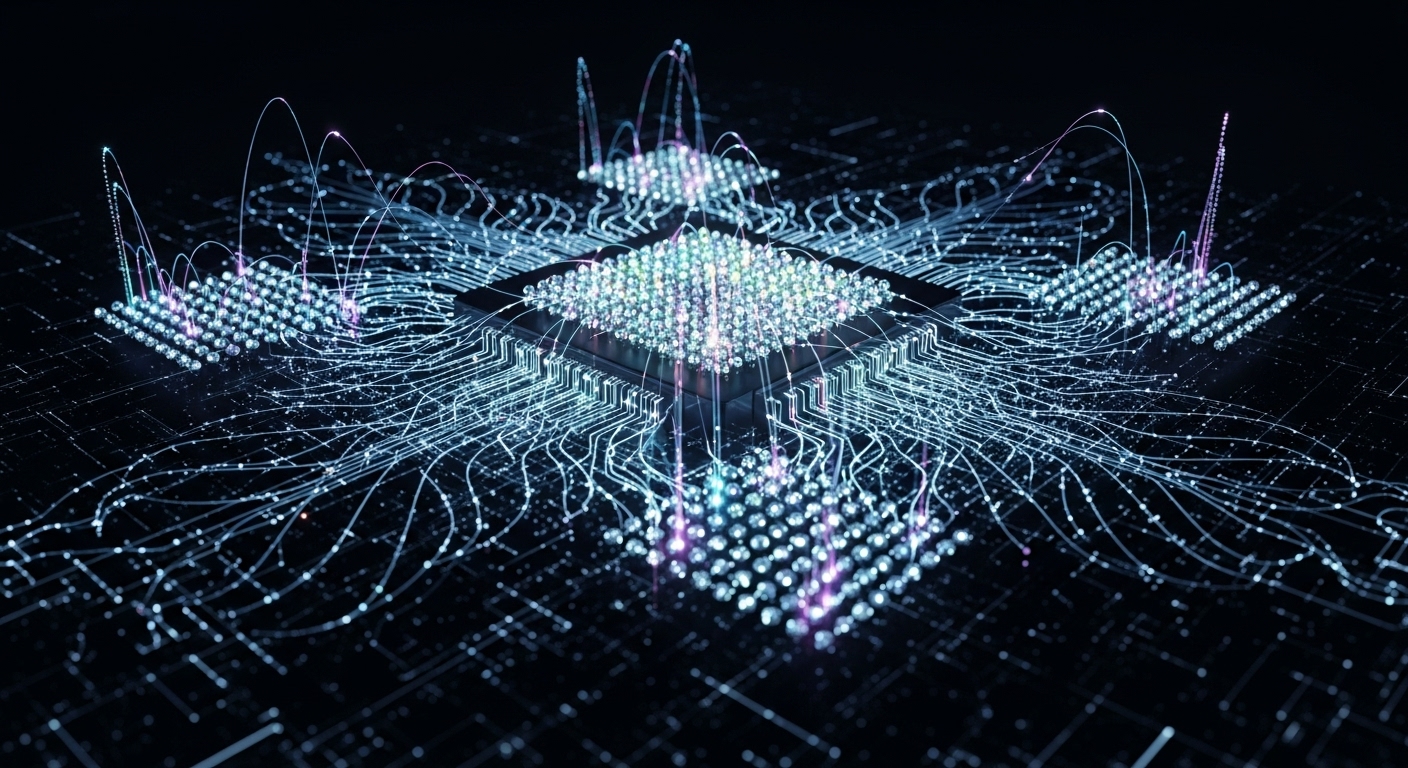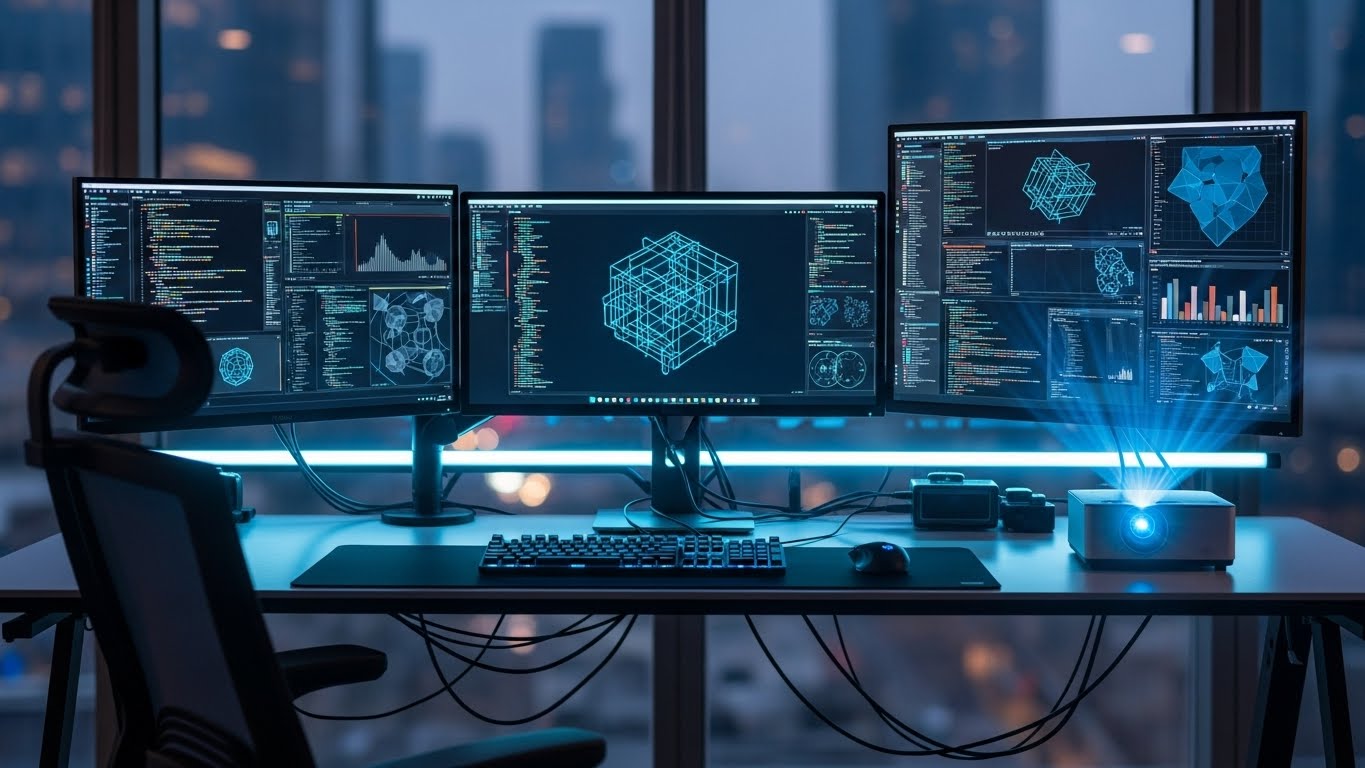Introduction
Technology is the defining force of the modern era, influencing every aspect of human life. From the ways we communicate and work to how we entertain ourselves and access knowledge, technological advancements have fundamentally reshaped our world. The pace of innovation has accelerated exponentially, introducing tools and systems that were unimaginable just decades ago.
Today, technology is not merely a convenience—it is a catalyst for societal change. Artificial intelligence, the Internet of Things, virtual reality, and other emerging technologies are not only enhancing human capability but also creating entirely new ways of thinking, learning, and interacting with the environment. This blog explores the evolution, current trends, and future potential of technology, emphasizing its transformative impact across industries and everyday life.
The Historical Evolution of Technology
Technology has evolved from simple tools to complex systems that shape global society. In early human history, basic implements like stone tools and fire enabled survival, while the invention of the wheel revolutionized transportation and labor. The Agricultural Revolution further transformed human societies, facilitating settled communities, surplus production, and the development of complex civilizations.
The Industrial Revolution marked a significant turning point, introducing mechanized production, steam engines, and factories. This era increased efficiency, transformed economies, and reshaped social structures. Technological innovations such as the telegraph, electricity, and railways expanded human connectivity and productivity.
The 20th century brought the digital revolution, marked by the rise of computers, telecommunications, and the internet. These innovations redefined information processing, communication, and accessibility, laying the foundation for the interconnected world we live in today.
Computing and the Internet: Foundations of the Digital Era
Computers have become the backbone of modern technology. Early mainframes gave way to personal computers, enabling individuals and organizations to process complex information, manage data, and perform computational tasks efficiently. Computing technology has transformed industries ranging from finance and healthcare to education and entertainment.
The internet amplified the impact of computing by providing global connectivity. Information could be shared instantaneously, breaking down geographical barriers and enabling worldwide collaboration. The internet also democratized knowledge, giving individuals access to education, business opportunities, and social interaction like never before.
Cloud computing further transformed technology by allowing scalable data storage and remote access to software and processing power. Organizations can now operate flexibly, collaborate globally, and reduce reliance on physical infrastructure, while individuals benefit from seamless access to digital tools and content.
Artificial Intelligence and Machine Learning
Artificial intelligence (AI) is one of the most transformative technologies of the 21st century. AI enables machines to learn from data, analyze patterns, and perform tasks traditionally requiring human intelligence. Its applications span healthcare, finance, transportation, customer service, and entertainment.
Machine learning, a subset of AI, allows systems to improve performance over time by learning from experience. It powers recommendation algorithms, fraud detection systems, and predictive analytics, enhancing both business efficiency and user experiences. AI-driven automation is transforming workflows, enabling humans to focus on complex, creative, and strategic tasks.
AI also enhances decision-making by providing insights derived from vast datasets, predicting outcomes, and optimizing operations. In healthcare, AI assists in diagnostics, treatment planning, and disease prevention, improving patient outcomes and operational efficiency.
Mobile Technology and Ubiquitous Connectivity
Smartphones and mobile devices have revolutionized communication and information access. Mobile technology allows users to connect instantly, access information on demand, and perform a multitude of tasks from anywhere in the world. High-speed networks, including 4G and 5G, have further enhanced mobile capabilities, supporting video streaming, gaming, virtual meetings, and real-time collaboration.
Mobile applications have created ecosystems for banking, entertainment, health, education, and social networking. Users can navigate cities, monitor their fitness, shop online, and even control smart home devices directly from their smartphones. Mobile technology has fundamentally reshaped lifestyles, enabling convenience, productivity, and connectivity in unprecedented ways.
The Internet of Things and Smart Devices
The Internet of Things (IoT) connects everyday objects to the internet, enabling them to collect and share data. Smart devices, including home assistants, thermostats, security cameras, and wearables, provide automation, personalization, and enhanced control over daily activities.
In homes, IoT devices optimize energy usage, improve security, and offer convenience through voice commands or automated routines. Wearables monitor health metrics such as heart rate, sleep patterns, and activity levels, helping users make informed lifestyle choices.
Industries also benefit from IoT, with smart sensors enabling predictive maintenance, efficient logistics, and enhanced production management. IoT technology creates intelligent systems that enhance decision-making, reduce costs, and improve operational efficiency across sectors.
Virtual Reality, Augmented Reality, and Mixed Reality
Virtual reality (VR) immerses users in fully digital environments, offering interactive experiences for gaming, education, training, and simulation. Augmented reality (AR) overlays digital information on the physical world, enhancing navigation, industrial design, and consumer experiences. Mixed reality (MR) combines both VR and AR, allowing interaction with physical and digital objects simultaneously.
These technologies are transforming multiple sectors. In healthcare, VR is used for surgical training and therapy. In education, AR and VR provide immersive learning experiences that improve understanding and engagement. The entertainment industry uses these technologies to create new storytelling possibilities, while businesses use them for product visualization and interactive marketing.
Cybersecurity in the Digital Age
As technology becomes increasingly integrated into daily life, cybersecurity has emerged as a critical concern. Threats such as data breaches, ransomware, phishing, and identity theft pose risks to individuals, businesses, and governments. Protecting digital infrastructure requires advanced encryption, multi-factor authentication, and continuous monitoring.
AI-driven security systems detect anomalies and potential threats in real-time, mitigating risks before they escalate. Organizations must adopt proactive measures, including regular security audits, employee training, and robust backup strategies, to ensure resilience against cyberattacks.
The complexity of modern technology, including cloud services and IoT networks, makes cybersecurity an ongoing challenge, emphasizing the need for innovative and adaptive protective strategies.
Technology in Education
Technology has transformed education by making learning more accessible, personalized, and interactive. Online platforms, digital textbooks, and e-learning tools allow students to access high-quality resources from anywhere, participate in virtual classrooms, and collaborate globally.
Artificial intelligence enhances education by providing adaptive learning systems that tailor content to individual student performance. Gamification and interactive simulations make learning engaging, improving retention and comprehension.
Educational technology also equips students with digital skills essential for the modern workforce, including coding, data analysis, communication, and problem-solving. Technology in education prepares learners for future challenges while fostering creativity, critical thinking, and collaboration.
Healthcare and Medical Innovations
Medical technology has revolutionized healthcare delivery, improving diagnostics, treatment, and patient outcomes. Innovations such as robotic surgery, telemedicine, wearable devices, and AI-assisted diagnostics enhance precision, efficiency, and accessibility.
Wearable devices monitor vital signs, track physical activity, and provide real-time health feedback, allowing individuals and medical professionals to detect potential issues early. Telemedicine enables remote consultations, reducing travel and wait times while expanding healthcare access to underserved populations.
AI algorithms analyze vast medical datasets, predicting disease trends, optimizing treatment plans, and assisting in research for new therapies. The integration of technology in healthcare continues to improve quality of care and patient experiences worldwide.
Sustainable Technology and Environmental Impact
Sustainable technology addresses environmental challenges while promoting growth and efficiency. Renewable energy sources, electric vehicles, smart grids, and energy-efficient infrastructure reduce carbon emissions and conserve resources.
Data analytics and IoT technology support environmental monitoring, predictive modeling, and resource optimization. Smart agriculture uses sensors and automated systems to improve crop yields while reducing water and energy consumption.
Sustainable technology demonstrates the potential for innovation to solve global problems, ensuring that technological progress aligns with ecological responsibility and long-term societal benefits.
Automation and Industry 4.0
Automation and Industry 4.0 technologies are transforming manufacturing, logistics, and service sectors. Robotics, AI, and smart machinery improve productivity, reduce operational costs, and enhance precision.
Predictive maintenance powered by IoT sensors prevents downtime, improves safety, and extends equipment lifespan. Automation also frees human workers from repetitive tasks, enabling them to focus on strategic, creative, and supervisory roles.
While automation increases efficiency, it also presents challenges for employment and workforce adaptation. Reskilling and education programs are essential to ensure that workers remain relevant in a technology-driven economy.
Emerging Technologies: Quantum Computing and Beyond
Quantum computing represents the next frontier in technological advancement. Quantum computers use qubits to process information in ways impossible for classical computers, enabling breakthroughs in cryptography, material science, pharmaceuticals, and artificial intelligence.
Other emerging technologies, including brain-computer interfaces, next-generation networks, and nanotechnology, are set to redefine human-computer interaction, communication, and production processes. These innovations promise to revolutionize industries and create new avenues for scientific discovery.
The Future of Technology
The future of technology promises unprecedented change. AI, IoT, VR, AR, quantum computing, and sustainable innovations will continue to reshape human life, work, and interaction. Emerging technologies will enable faster problem-solving, improved communication, and enhanced decision-making.
Ethical considerations, cybersecurity, and equitable access will play a vital role in ensuring that technology benefits society broadly. Responsible development, inclusive policies, and global collaboration will be crucial in maximizing technology’s potential while minimizing risks.
Technology will remain central to human progress, offering solutions to global challenges, creating new opportunities, and fostering innovation in all aspects of life.
Conclusion
Technology is the cornerstone of modern civilization, transforming industries, societies, and individual lives. From computing and AI to mobile connectivity, IoT, VR, and automation, technological innovation continues to redefine possibilities and expand human potential.
Its impact spans education, healthcare, industry, entertainment, and sustainability, highlighting its transformative power. At the same time, challenges such as cybersecurity, ethical considerations, and workforce adaptation demand thoughtful solutions.
As technology advances, embracing innovation responsibly, investing in education, and fostering global collaboration will ensure that technology continues to drive progress, empower individuals, and create a connected, sustainable, and dynamic future.



